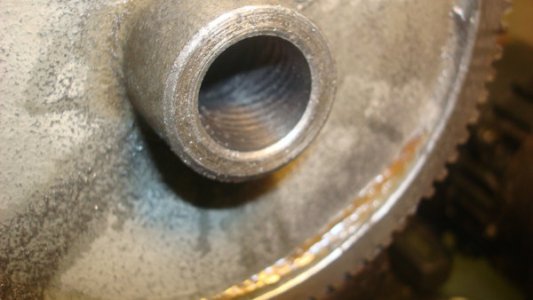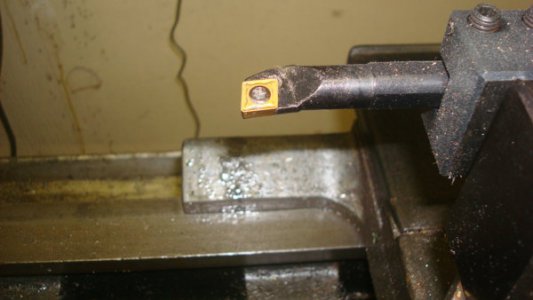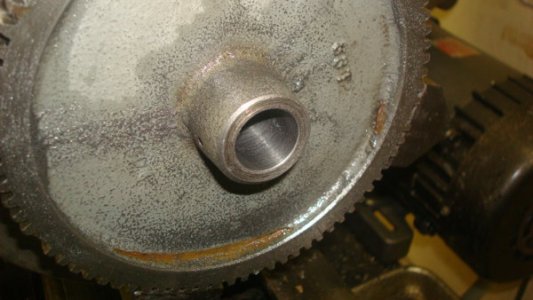Guys this is a gear for the South Bend Fourteen that I been working on so I though I would start making the repairs but I guess there's more to the repairs than I thought.Anyway I am using my Atlas 12" lathe and turning around 480 rpm according to the plate and I am using cutting oil.Looking inside the gear its has a wavy pattern,the last pass I tried just taking a clean up pass.You know just going back over it at the same setting,which the wavy pattern was there before the clean up pass.The insert is one for just mild steel,its not one that specifically made for cast iron but figure it would work.What am I doing wrong,do I need to speed up the rpms,I am using the power feed than I tried hand feed but same results.Thanks for some guidance-----kroll






